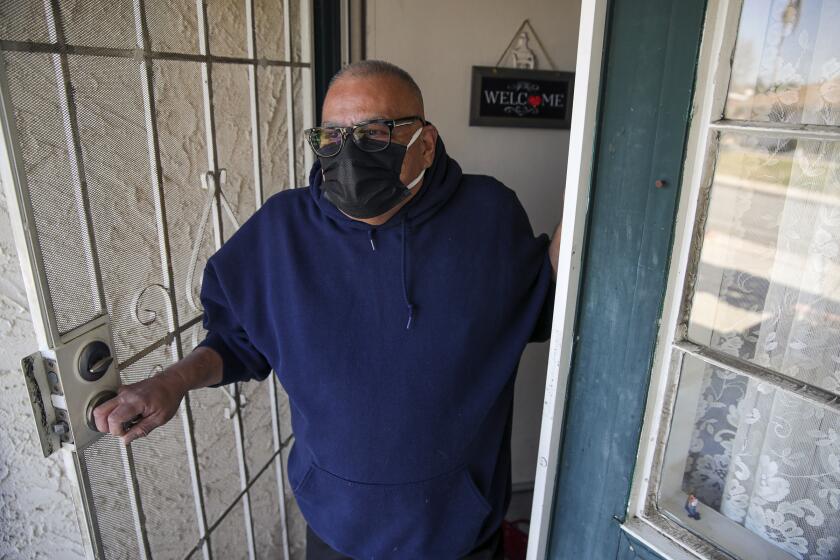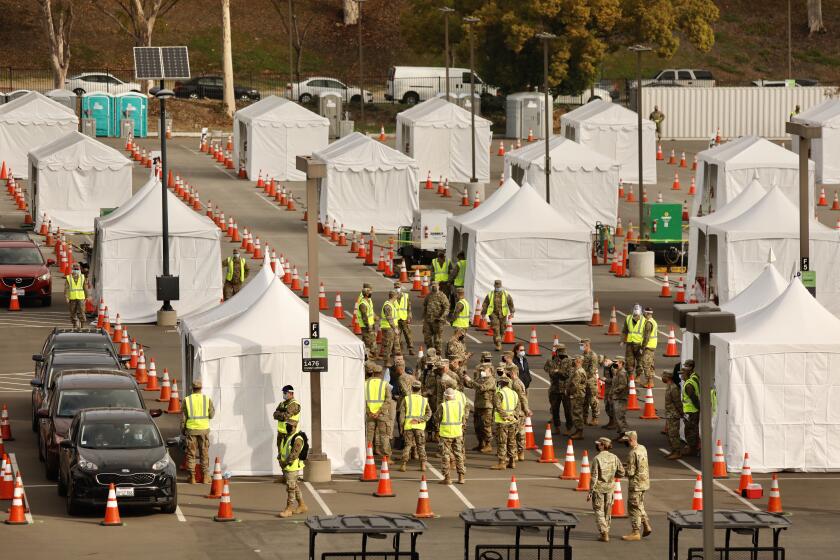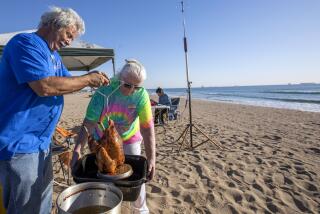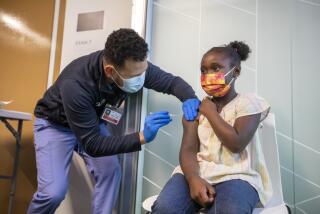I’m fully vaccinated. Can I hug a friend? Eat indoors? See a movie? Here are answers
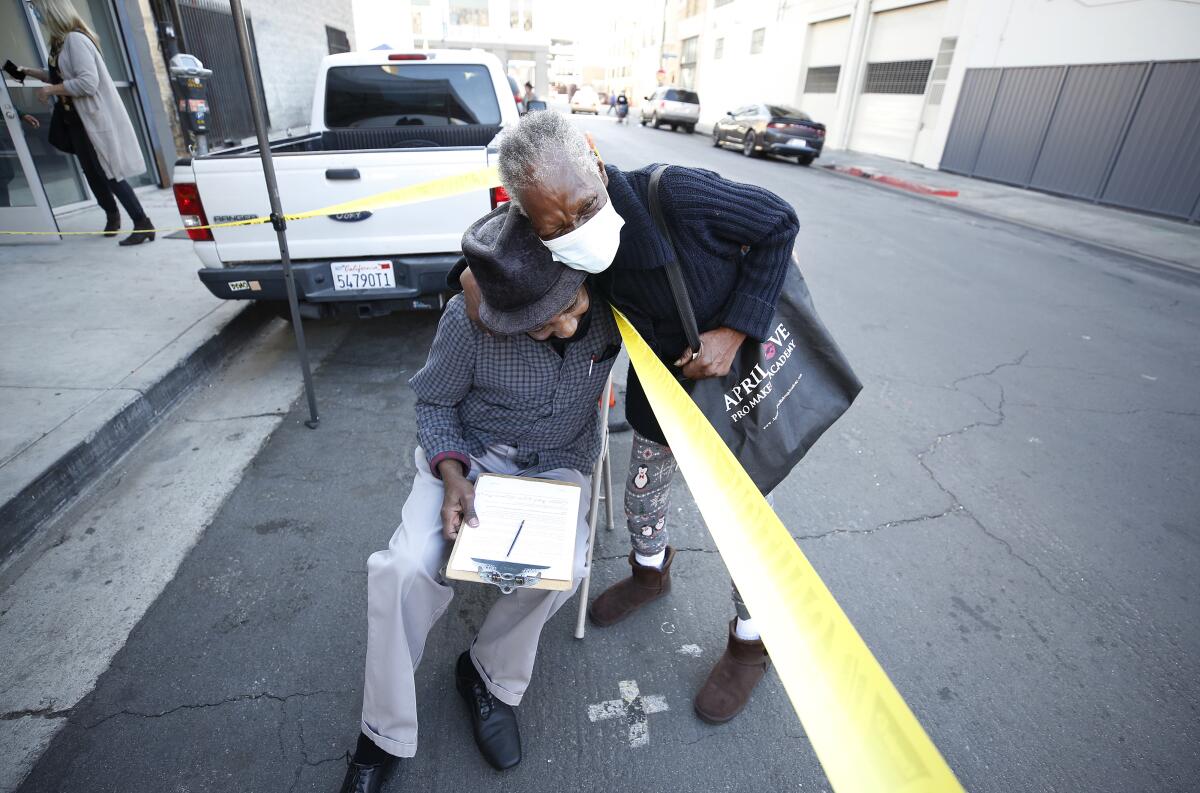
With about 5% of Americans having received two doses of COVID-19 vaccines, many are wondering: What activities are safe? Some experts weigh in.
Can I have a dinner party? Yes, but...
It would be safest to wait until everyone getting together is vaccinated, health experts say. The current approved vaccines both require two shots for them to work most effectively, and full protection may not come until a week or two after the second dose.
Although scientists are confident that the Moderna and Pfizer-BioNTech vaccines for COVID-19 are 94% to 95% effective in preventing clinically recognizable disease, they don’t yet know whether vaccinated people can be asymptomatic carriers of the virus.
“We don’t know yet whether [the vaccine] prevents asymptomatic infection,” Dr. Anthony Fauci, the U.S. government’s top infectious diseases expert, said on the “L.A. Times Today” program regarding the Pfizer and Moderna vaccines. “So it is conceivable and theoretically possible that you could get infected, but because you’re vaccinated, you don’t get sick. In other words, the vaccine works, but it didn’t protect you from infection.”
Share a hug? Yes.
That “means you can have virus in your nasopharynx that you could shed. And theoretically, you could infect someone else,” Fauci said. “And that’s the reason why we say, until we get the answer — and we will get the answer to that question, hopefully within the next couple of months — but we tell people that even though you’re vaccinated, you should wear a mask, because you might be shedding virus that could infect others.”
But Fauci also said if both parties had been vaccinated they could hug away.
“Can I sit down and give them a hug?” Fauci said last week in an interview on MSNBC, echoing a question about interaction between vaccinated family members who don’t live together. “The answer is very likely, ‘Of course you can.’ ”
The pervasive fear is gone, though not everyone is ready to resume pre-pandemic habits after receiving both vaccine doses.
But it’s not clear whether, for instance, a vaccinated grandparent visiting unvaccinated children and grandchildren could be an asymptomatic carrier of the virus and transmit it to family members, especially if they’re not masked.
“You’ve got to be careful because Grandma could still get virus in her nasopharynx, even though the vaccine is preventing her from getting physically ill,” Fauci said recently on NBC’s “Today” show. “That’s the reason why we say, until we have the overwhelming majority of people vaccinated and the level of virus is very low, [even] when you’re vaccinated … it would be prudent to wear a mask.”
Dine indoors at a restaurant? No.
On Monday, Fauci said at a briefing that federal officials were coming up with recommendations on what vaccinated people can do. But there are certain activities that even those who are fully vaccinated should avoid because the virus is still so widespread, Fauci said, such as dining inside restaurants and going into theaters.
“We are still at an unacceptably high baseline level” of disease, Fauci said.
Quarantine if exposed? No need.
But those who have received both vaccine doses no longer need to quarantine themselves if they are exposed to a person infected with the coronavirus, Dr. Rochelle Walensky, the director of the U.S. Centers for Disease Control and Prevention, said at Monday’s briefing.
Mingle at a gathering? Yes, but ...
Other experts have also weighed in on what life after vaccination can look like. Dr. Monica Gandhi, a UC San Francisco professor of medicine and medical director of the HIV Clinic at Zuckerberg San Francisco General Hospital, said at a campus forum that she thinks fully vaccinated people can be free to mingle with one another, such as at a party, without restrictions.
But when vaccinated people are around those who haven’t gotten their inoculations, everyone should keep their masks on, Gandhi said. “Let’s keep it safe and keep our masks on around the unvaccinated,” she said.
Though some outside the federal government are already expressing opinions about what is considered safe, Andy Slavitt, a senior advisor to the White House COVID-19 response team, said at the briefing while “that’s a part of the discourse ... it’s not one that we are going to jump in to too hastily.”
The announcement comes after The Times reported that codes meant for residents of neighborhoods hardest hit by the pandemic were being used by others.
In California counties that are in the most restrictive, or purple, tier, gatherings can be held, but they can include members of no more than three households, must be outside and people from different households should be at least six feet from each other. People should be masked unless they are actively eating or drinking.
Indoor gatherings can be held in counties in the less restrictive tiers — red, orange and yellow — but officials strongly urge that they be held outdoors.
Continue masking up? Yes.
Experts also have suggested that masks should continue to be worn and say that N95 and KN95 masks offer superior protection.
KN95 masks — built to a Chinese design — filter up to 95% of particles in the air. They may be preferable for those who must be in close contact with people who don’t live in the same household or for people who are at an increased risk for severe illness from COVID-19, according to the CDC. The CDC’s website offers tips on what to look for in purchasing a KN95 mask.
The CDC, however, points out that such masks often require more effort to breathe and may be more expensive and difficult to obtain. Poor quality is also a problem; at least 60% of the KN95s evaluated by the CDC’s National Institute for Occupational Safety and Health were found to not meet the requirements their manufacturers claimed to meet.
A KF94 mask — built to a South Korean design that is 94% effective — is a good alternative to an N95 mask, according to a tweet by Joseph Allen, assistant professor at the Harvard T.H. Chan School of Public Health.
Allen has said in various interviews that KF94s are comfortable and come in small and medium sizes, a benefit for people who find that N95 masks are too big and don’t provide a tight fit, rendering them ineffective.
For all the talk of N95, KN95 and KF94 masks, though, Walensky has said that the agency does not recommend the routine use of N95 masks for protection against the coronavirus by the general public.
“Abundant scientific laboratory data, epidemiologic investigations and large population-level analyses demonstrate that masks now available to the general public are effective and are working,” Walensky said in a recent briefing. “And there is little evidence that when worn properly, well-fitting medical cloth masks fail in disease transmission.”
The CDC has suggested that people wear masks that have two or more layers of washable, breathable fabric; completely cover the nose and mouth; fit snugly against the sides of the face and don’t have gaps; and have a nose wire to prevent air from leaking out of the top. The agency warns against choosing masks made of fabric that make it hard to breathe, such as vinyl, or have exhalation valves that allow viral particles to escape.
To make a common mask even more effective, experts suggest putting on a paper mask — such as a common blue surgical mask — and then covering it with a tight-fitting cloth mask. The second mask will cover gaps that can occur with a paper mask.
Using a loose medical-procedure mask or only a cloth mask has proved to block only about 40% of particles from a simulated cough in tests. But tighter-fitting masks have the potential to reduce exposure to potentially infectious particles by more than 90%, the CDC said.
Keep up my guard? Yes.
Another good masking strategy is buying cloth masks with a replaceable filter, Gandhi said.
Indoor visits, such as grocery store trips, might call for double-masking or wearing a cloth mask with a replaceable filter to tamp down on transmission of the virus, Gandhi said. But if you’re outside in public, a simple cloth mask or a surgical mask is sufficient, and no mask is needed if you’re alone, she said.
But the bottom line, the CDC’s Walensky said, is this: “Masks work, and they work best when they have a good fit and are worn correctly. … Masks should be used in combination with other prevention measures to offer you and your community the most protection from COVID-19: Stay at least six feet apart from other people you don’t live with, avoid crowds and travel and wash your hands often.”
More to Read
Sign up for Essential California
The most important California stories and recommendations in your inbox every morning.
You may occasionally receive promotional content from the Los Angeles Times.
